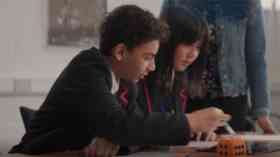
A lesson to save a life
Knowing the basics of first aid could mean the difference between life and death. How can we make sure students are being given these essential skills? Robyn Quick finds out.
A collapse in the street.
A burn in the kitchen.
A seizure on the bus.
All of these scenarios require at least a basic understanding of first aid. However, the British Red Cross said that only one in 20 adults in the UK have the confidence or skills to provide basic first aid in an emergency situation.
This can lead to unnecessary deaths, injuries and disabilities, and can put greater pressure on emergency services.
It’s no wonder that many schools and organisations are pushing for more children to learn these life-saving skills.
Former secretary of state for education, Damian Hinds, said in 2019 that “children and young people are growing up in an increasingly complex world,” adding “they need to know how to be safe and healthy.”
First aid is the first and immediate assistance given to any person with either a minor or serious illness or injury. This definition spans a whole range of medical ailments from CPR to drowning, from nosebleeds to choking.
There are a variety of ways schools can incorporate first aid into the curriculum in an inclusive and informative way. While it may take a little extra effort to include in children’s education, the pros massively outweigh this. For example, first aid increases awareness and can reduce a child’s susceptibility to accidents. Also, it can be empowering for young people to not feel helpless in an emergency situation.
They can instead use their knowledge to act quickly and efficiently.
Teaching children these skills now paves the way for a more first aid aware generation in E F the years to come. So what can schools do to encourage young people to get involved?
Lesson plans
The Department of Education recommends different levels of first age for each Key Stage. To ensure that students are at the right level of first aid, there are a variety of lesson plans to choose from.
St John Ambulance, for example, offers a handy guide for different Key Stages and headed the “Every Child is a Lifesaver” campaign along with other charities to make sure first aid was added into the school curriculum.
Lisa Sharman, head of education and product development at St John Ambulance, said the organisation has introduced these materials to “teach and inspire the next generation of lifesavers.”
She added: “The KS2 lesson plans and guides contain engaging step-by-step guides and presentations to help teachers confidently explain how to safely give someone first aid for a range of emergency scenarios with language being adapted to suit each age group.
“Alongside this, we’ve developed our Young Responders programme which has been rolled out in key locations across the country and focusses on supporting young people from under-served communities.”
Sharman said the programme tailors first aid and mental health advice to each community to help tackle contemporary problems and more localised issues, like street first aid, relevant to young people.
As well as this, the British Red Cross has a ‘First Aid Champions’ resource available for free on their website.
It gives a wide range of categories that are specifically targeted at different age groups such as teaching 14 - 19 year-olds about medical issues caused by alcohol.
First aid lessons can be taught by existing school staff, or they can bring in external experts. It’s a legal requirement for schools to have a minimum of one first aider on the premises at all times. This means that teachers aren’t legally required to be qualified first aiders, but it is strongly recommended that they are given some kind of first aid training.
Both options have cost and resource implications, as it costs more to outsource professionals. However, it can make a big difference by providing that hands-on approach to practical training to bring the subject to life and really engage the children.
First aid clubs
Setting up a first aid club at school is a good way to get children involved with first aid, as well as meeting new people outside of lessons.
Students and staff are able to come together to raise awareness of the importance of first aid and learn life saving skills, away from an academic environment. Unlike the previous suggestion, these clubs are voluntary which may mean the attendees will be even more passionate about learning first aid.
It can be helpful for children to see teachers getting involved as well, and a first aid refresher can never hurt!
It can also be overwhelming for children in larger groups to learn the first aid techniques, so these clubs provide a smaller class for a better experience. The maximum number of children learning first aid together is 16, but this depends on how many clubs or classes your school can afford to run and availability of teachers.
These small numbers mean the teacher can make sure all the students are engaged and understand the content.
Be aware of government guidance
Knowing what is legally required as part of a school is always important, especially when it comes to first aid training and equipment.
Since 2020, the UK government has stated that all state-funded schools in England are required to teach first aid as part of health education for all Key Stages. This is different for primary and secondary schools.
Those in primary school are required to learn how to confidently make an emergency call and how to deal with head injuries. Secondary school students are expected to be taught more complex emergency procedures, such as CPR and using a defibrillator.
The government has also been introducing first aid equipment to education settings, making it easier for children to make first aid part of their lives.
Since July 2023, for example, every state school has installed defibrillators. It is the right of every one of these schools to have a working defibrillator, so if you don’t have access to one in the workplace, that should be looked into.
Secondary school pupils are expected to be taught how to use the device.
Take it seriously
Finally, it is often easy to overlook the importance of first aid in schools. It can often seem like a tedious task to teach it to a class of students each year, but you must not forget how these techniques could one day save a life. This is one of those lessons that students will take outside the classroom and can immediately apply to the real world.
If it is treated as merely paying lip-service to the topic, it could result in children learning the wrong techniques which could be dangerous.
It is such an important topic that it is vital they fully understand what they need to be doing and why.
Latest News
08/01/2026 - 10:30
The government is launching a new app allowing students to view their GCSE results on their phones for the first time from this summer.
08/01/2026 - 09:45
Education Business LIVE has announced that Professor Samantha Twiselton OBE of Sheffield Hallam University will speak at the event in March 2026, delivering two thought-provoking sessions focused on initial teacher training and SEND provision.
07/01/2026 - 10:10
Solve for Tomorrow is a free, curriculum-linked programme which is mapped to Gatsby Benchmarks 4, 5, and 6, helping teachers embed careers education without adding to workload.
06/01/2026 - 10:24
London's universal free school meals programme has not led to improvements in pupil attainment during its first year, but has eased financial pressure and reduced stress for families.
05/01/2026 - 10:44
New regulations have come into force from today, banning adverts for unhealthy food and drinks before 9pm, and online at all times.







